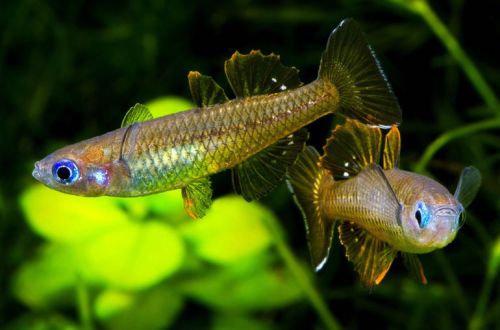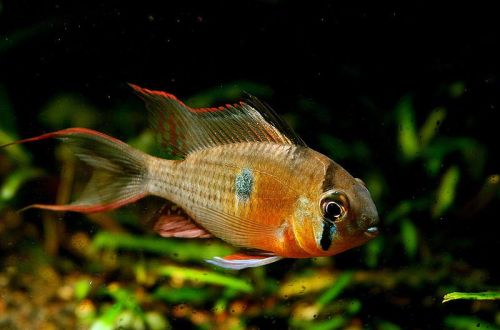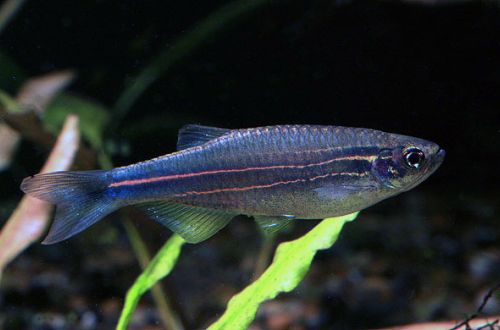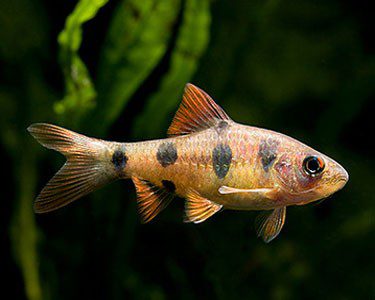
Barbus Everett
Everett’s barb, scientific name Barbodes everetti (formerly Puntius everetti), belongs to the Cyprinidae family. An active tropical fish with an interesting coloration, similar to a clown costume, thanks to which the fish got another name “Clown barbus”. A number of features in the content do not allow calling it a fish for beginners, therefore, before choosing this type of barb, you should familiarize yourself with its description and care requirements.

Habitat
Everett’s barb was first described in detail in 1894. The fish lives in Southeast Asia and on the islands, prefers shallow, well-heated reservoirs, quiet forest streams and tributaries with a weak flow of water. Worms, insects, crustaceans, plants and organic remains (fallen leaves, fruits, etc.) are eaten.
Requirements and conditions:
- The volume of the aquarium – from 100 liters.
- Temperature – 26-28°C
- Value pH — 6.0–6.5
- Water hardness – soft (8–10 dH)
- Substrate type – sand with single stones
- Lighting – moderate
- Brackish water – no
- Water movement – moderate
- Size – up to 10 cm.
- Meals – any, preferably high in protein
- Life expectancy – from 4-8 years
Description
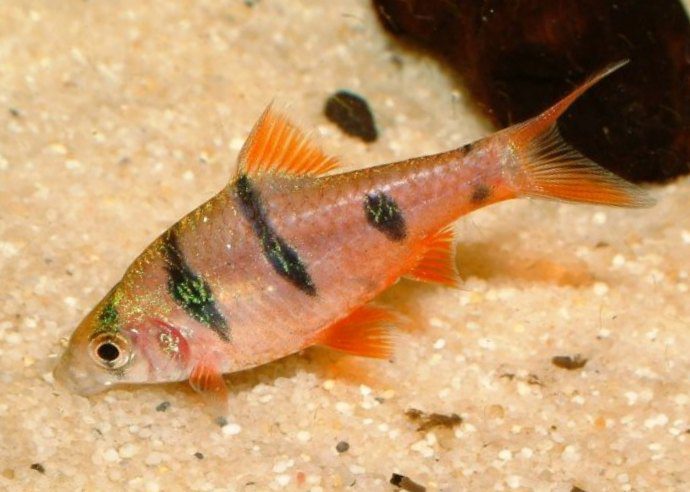
The fish has a torpedo-shaped, swift body shape and a forked tail fin, in the aquarium it reaches a modest size of about 10 cm. The color of the body can be described as reddish-gold, from dark shades on the back to light on the belly. Red pigments are sometimes present on the iris. On the sides of the body there are dark spots of an oblong shape, usually about four.
Under favorable conditions, life expectancy is up to 8 years.
Food
Omnivorous, able to eat all types of dry industrial feed, live and frozen foods (bloodworm, brine shrimp, tubifex, etc.), plant foods. It is not necessary to feed the fish exclusively with one type of food, it should be combined, for example, dry food should be served together with live food. Uniformity of food is allowed if special food is used for this type of fish, which already contains all the necessary products.
Maintenance and care
When maintaining, it is necessary to observe one important condition – to provide clean water and its regular replacement. It is recommended to renew 25% of the total water volume at least once a month, since the Clown Barbus is sensitive to the content of organic waste decomposition products (food, plant residues, excrement) in the water. For small fish – a small aquarium from 1 liters. Creating conditions close to their natural habitat will keep the fish in good shape without unnecessary stress. Coarse sand with smooth stones is preferred as a substrate, and plants with strong stems and stiff leaves will not suffer from fish activity. Plants should be placed at the edges to leave enough space in the middle for swimming. The presence of shelters is welcome – artificial (castles, ships, etc.) and natural (snags, roots, etc.).
Social behavior
Everett’s barbus is a schooling species, keeping at least 5-6 individuals; activity borders on aggressiveness, slow and small species can be injured or even killed, so choose large and mobile fish as neighbors. Solitary content enhances aggression, which is leveled in the group, and the barb can attack fish even of its size, start hunting for it.
Breeding / breeding
Sex differences are weak. Breeding the Clown Barbus is difficult, it requires the selection of partners and a separate tank with special conditions. The male matures by one and a half years, the female by the year, if the partners have a difference in age of more than 2 years, then they will not breed. The spawning tank should be filled to 15-20 cm, the bottom is covered with fine mesh and Javanese moss, where the eggs fall before the parents have time to eat them. The lighting is subdued. Water parameters: soft and slightly acidic. After spawning, the parents are placed back in the general aquarium, the fry appear after 20-30 days, depending on the water temperature.
Diseases
Keeping in favorable conditions avoids health problems, the presence of any specific diseases inherent in this species was not observed. More information about diseases and their symptoms can be found in the Fish Diseases section.
Features
- Can jump out of the aquarium
- May not be friendly to smaller species
- Keeping a flock of at least 5-6 individuals



